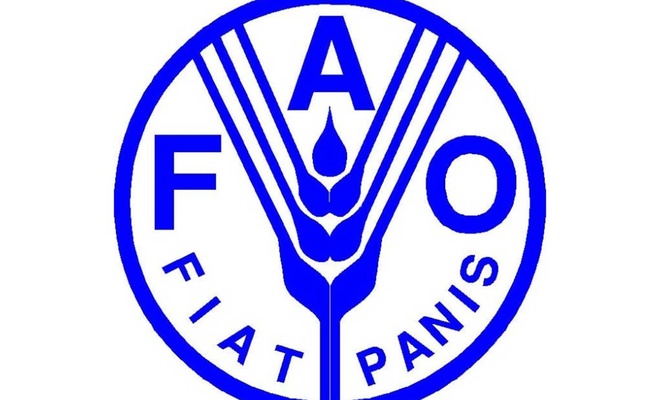Global food price reached a 26-month high in November
Food Price Index (FFPI) averaged 177.2 points in November 2019; up 4.7 points (2.7 percent) from October and 15.4 points (9.5 percent) from the corresponding period last year, the UN Food and Agriculture Organization (FAO) Thursday.

 Google News'te Doğruhaber'e abone olun.
Google News'te Doğruhaber'e abone olun. According to the FAO, the November hike from the previous month, mostly driven by significant surges in the prices of meat and vegetable oils, pushes the overall FFPI value to its highest level since September 2017. Sugar prices also increased in November, while the dairy sub-index remained steady and cereal prices drifted lower.
Cereal Price Index averaged 162.4 points in November, down 1.9 points (1.2 percent) from October. Large export supplies and stiff competition among the world’s leading exporters weighed on international wheat prices, while rice values also fell in November, to six-month lows, pressured by new crop arrivals and sluggish import demand. In the coarse grains market, US maize export prices remained under down pressure amid slow pace in sales, while export quotations from other origins, in particular Argentina and Brazil, were generally firmer on strong domestic as well as international demand.
Vegetable Oil Price Index averaged 150.6 points in November, up 14.2 points (10.4 percent) from October and marking the highest level since May 2018. The rise was led by firming palm oil values, while also soy, rapeseed and sunflower oil prices increased. International palm oil quotations rose for the fourth consecutive month, extending the rebound in prices from the multi-year lows registered since late 2018. In addition to earlier-than-expected production slowdowns in major producing countries, the increase in palm oil prices was fueled by robust global import demand, increased utilization for biodiesel and expectations of possible supply shortages next year. While palm oil values were behind the increase in prices throughout the vegetable oil complex, rapeseed and soy oil values also received support from, respectively, continued supply tightness and sustained demand from the biofuel sector.
Dairy Price Index averaged 192.6 points in November, registering only a marginal increase from October, after two months of declines. At this level, the index is 16.8 points (9.5 percent) above the corresponding month last year. In November, international price quotations for skim milk powder (SMP) and whole milk powder (WMP) rose the most, reflecting tighter availability of spot supplies, as milk production in Europe entered its seasonal low, amid brisk global import demand. After two months of declines, butter quotations rose slightly due to good overall demand, notwithstanding ample export availabilities. Cheese prices fell for a third consecutive month, as available supplies somewhat exceeded the demand.
Meat Price Index averaged 190.5 points in November, up 8.4 points (4.6 percent) from October, representing the largest month-on-month increase since May 2009. At this level, the index is almost 28 points (17.2 percent) above its value a year ago, but still 21.5 points (9.4 percent) below the peak reached in August 2014. Price quotations for all types of meat represented in the Index firmed, with those of bovine and ovine rising the most, reflecting tight export availabilities against persistent strong import demand, especially from China. Demand led by end-of-the-year festivities exacerbated the tightening of global meat markets, lifting pig meat prices further and resulting in some increase in poultry meat prices after three months of declines.
Sugar Price Index averaged 181.6 points in November, up 3.3 points (1.8% percent) from October. The latest increase in international sugar prices came on the back of mounting indications that world sugar consumption would surpass production in the 2019/20 season. Less than ideal growing conditions in Thailand, India, France and the United States raised chances for marked production setbacks and a reduction in global stocks. Large speculative movements amid uncertainties related to crop conditions, coupled with mixed prospects in the crude oil market, contributed to more volatile sugar futures prices in recent weeks. (ILKHA)



















































